Making water drinkable with nanotechnology: it’s now a reality!
Focus
Focus
Category Facet
Custom Facet
Search Results
-
Web Content Article On Aug 4, 2020 5:14 PM
More than 130 thousand emergency response reports involving 1,500 employees in 2019. More than 50 thousand emergency response operations in the first six months of 2020, in a local area that...
utility4.0 Categoria Progetto: Innovation -
Web Content Article On Aug 4, 2020 5:02 PM
Thanks to robotics and artificial intelligence we can make our flows more efficient and develop the full potential of individuals and their intellectual capacities. With our Robotic & Intelligent...
utility4.0 Categoria Progetto: Innovation -
Web Content Article On Aug 4, 2020 4:39 PM
How do we monitor 6,600 plants and over 67,000 km of networks? With our Forlì Remote Control Technological Hub, which monitors operation in real time to detect failures and malfunctions of...
utility4.0 Categoria Progetto: Innovation -
Web Content Article On Aug 4, 2020 4:15 PM
Our 300,000 waste bins are talking. How? Thanks to a "tag" that always tells us where they are, how they are working and if they have been emptied. Find out more about the projects of...
utility4.0 Categoria Progetto: Innovation -
Web Content Article On Aug 4, 2020 4:01 PM
From city to "smart city" thanks to data: with our detection systems we can monitor traffic trends, air quality and consumption of public parks.
utility4.0 Categoria Progetto: Innovation -
Web Content Article On Aug 4, 2020 3:46 PM
The Digital Workplace has transformed how we work, making office presence increasingly unnecessary, and fostering remote working and flexibility.
utility4.0 Categoria Progetto: Innovation -
Web Content Article On Aug 4, 2020 3:44 PM
Modena's smart purification plant is COSTANCE, the prototype of the purification plant of Granarolo dell'Emilia. Two outstanding examples of sustainable water resource management.
utility4.0 Categoria Progetto: Water Project Innovation -
Web Content Article · By Palvi Andrea Tonziello On Aug 4, 2020 3:40 PM
With our digital payment solutions, you can pay your bills quickly, easily and securely, directly from your smartphone or home PC.
utility4.0 Categoria Progetto: Innovation
Asset Publisher
Discover the project for “removing and capturing” microcontaminants with recycled materials
Micropollutants, or microcontaminants, are chemicals such as pesticides, drugs, medicines and other organic substances that are present in water in very low concentrations. These are substances that are hazardous to human health and the environment, which we constantly monitor and research in order to identify effective removal mechanisms and abatement technologies.
“Removing and capturing” microcontaminants
The project involves the use of materials recovered from the production of hollow fibres for membranes, such as scaffolds used in the medical field which, combined with graphene, can be used as filter material in the water purification process.
In this way, a valuable material, which would otherwise be lost as process waste, is put back into circulation and given new life.
Laboratory tests were performed comparing conventional materials, such as activated carbon and innovative materials (PSU-GO, RGO, GNP, etc.) for the treatment of water resources at the Pontelagoscuro (Ferrara) power plant.
The objective of the test was to verify the effectiveness of these materials in removing various micropollutants, such as: EMPs (Emerging MicroPollutants), EPs (Emerging Pollutants) and possible by-products of ozonation, such as bromates.
The results highlighted the effectiveness of certain filtering materials and the next step will be the construction of a pilot plant within the Pontelagoscuro power plant, to further study and perform further tests on a larger scale.
Laboratory results have highlighted the effectiveness of some filter materials, and the inauguration of the pilot plant at the Pontelagoscuro drinking water treatment plant in February 2024 allows the working group to implement full-scale application tests with varying concentrations of graphene oxide.
In addition to Hera, CNR and Medica are also taking part in the project. They have built the plant thanks to an EU LIFE project.
Search Bar
Tag Facet
Search Results
Asset Publisher



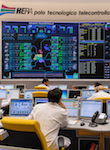
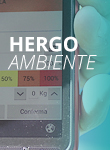
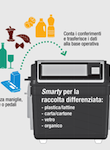


.png/02684bcc-be33-3bb3-daf4-5f1a2d9dac74)
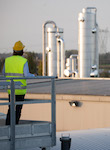

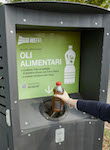

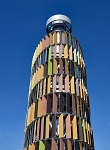

.jpg/468d051b-ba80-83a6-359d-7ef55eefd940)